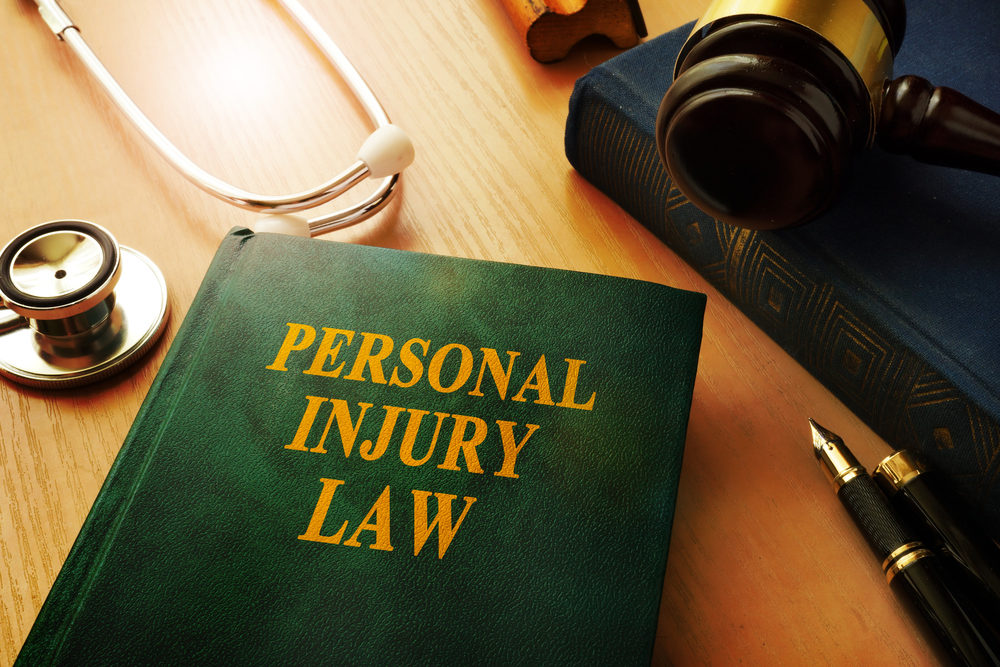
When you’re dealing with a personal injury case, the legal language can be overwhelming and confusing. Whether you’ve been involved in a car accident, slip-and-fall incident, or medical malpractice case, understanding key terms is essential for navigating the legal process. The following is an overview of the most common personal injury terminology, offering a helpful guide to understanding what each term means and how it applies to your case.
If you have been injured, call Shapiro, Washburn & Sharp to speak with a dedicated Norfolk personal injury lawyer to find out how we can help.
Plaintiff
The plaintiff is the individual who initiates a lawsuit by filing a complaint against the defendant. In a personal injury case, the plaintiff is the person who has been injured or harmed due to someone else’s actions or negligence and is seeking compensation. For example, in a car accident case, the injured driver or passenger would be the plaintiff.
Defendant
The defendant is the person or party being sued in a lawsuit. In personal injury cases, the defendant is usually the person, company, or entity that is alleged to be responsible for the plaintiff’s injuries. For example, if you are suing a driver for causing an accident, the driver would be the defendant. If a business’s negligence led to your injury, the business would be the defendant.
Negligence
Negligence refers to a failure to exercise the level of care that a reasonable person would under similar circumstances. In personal injury law, negligence is often the foundation for most lawsuits. To prove negligence, the plaintiff must show that the defendant owed a duty of care, breached that duty, and caused harm as a result of that breach. For example, a driver who runs a red light and causes an accident may be found negligent.
Duty of Care
The duty of care refers to the legal obligation that one party owes to another to avoid causing harm. For example, a driver has a duty of care to follow traffic laws and drive safely to avoid harming others on the road. Similarly, a property owner has a duty to maintain their premises in a safe condition to prevent injuries to visitors.
Breach of Duty
A breach of duty occurs when a person fails to fulfill their duty of care. For example, if a driver fails to stop at a red light, they have breached their duty of care to follow traffic laws and drive safely. In personal injury cases, proving a breach of duty is often one of the most important steps in establishing negligence.
Causation
Causation is the link between the defendant’s actions and the plaintiff’s injuries. To win a personal injury case, the plaintiff must prove that the defendant’s actions directly caused the injury. This is often referred to as the proximate cause. For instance, if a driver’s negligence caused a car accident, leading to the plaintiff’s broken leg, the accident is the proximate cause of the injury.
Damages
Damages refer to the compensation that the plaintiff seeks for the harm they have suffered. There are several types of damages in personal injury cases:
- Economic damages: These are quantifiable losses such as medical bills, lost wages, and property damage.
- Non-economic damages: These compensate for intangible losses such as pain and suffering, emotional distress, and loss of enjoyment of life.
- Punitive damages: These are awarded in cases where the defendant’s actions were particularly egregious or malicious. Punitive damages are designed to punish the defendant and deter similar conduct in the future.
Liability
Liability refers to legal responsibility for one’s actions or omissions. In a personal injury case, the defendant is considered liable if their actions were negligent or intentional and caused harm to the plaintiff. For example, a driver who causes an accident by texting while driving may be found liable for the injuries sustained by the other driver.
Settlement
A settlement is an agreement reached between the plaintiff and defendant (or their insurance company) to resolve the case outside of court. Settlements typically involve the defendant agreeing to pay a certain amount of money to the plaintiff in exchange for the plaintiff dropping the lawsuit. Many personal injury cases are resolved through settlements to avoid the time, cost, and unpredictability of a trial.
Tort
A tort is a civil wrong or injury that leads to a lawsuit. Personal injury law is often based on tort law, where an individual seeks compensation for harm caused by the wrongful actions of another. Torts can be classified as intentional (e.g., assault or battery), negligent (e.g., a car accident), or strict liability (e.g., a product defect).
Statute of Limitations
The statute of limitations is the time period within which a lawsuit must be filed after an injury occurs. If a plaintiff does not file a lawsuit within the statute of limitations, they may lose their right to seek compensation. The statute of limitations for personal injury cases varies by jurisdiction and the type of injury, but it typically ranges from one to six years.
Vicarious Liability
Vicarious liability refers to the legal responsibility of an employer for the actions of their employees while performing their job duties. For example, if an employee causes an accident while driving a company vehicle, the employer may be held vicariously liable for the employee’s actions. This principle is important in cases where an injury is caused by a worker acting within the scope of their employment.
Insurance Coverage
In personal injury cases, insurance coverage plays a crucial role in determining how claims are paid out. Many personal injury cases involve car accidents, where the defendant’s auto insurance will cover the plaintiff’s damages up to a certain policy limit. In cases of workplace injuries, workers’ compensation insurance may be involved. Additionally, healthcare or liability insurance can also play a role in compensating the victim for their medical expenses.
Medical Malpractice
Medical malpractice occurs when a healthcare provider fails to provide the standard of care expected in their profession, resulting in harm to the patient. This can involve surgical errors, misdiagnosis, medication errors, or failure to monitor a patient’s condition. Medical malpractice claims often require expert testimony to establish that the healthcare provider’s actions deviated from accepted medical practices.
Pre-Existing Condition
A pre-existing condition is any health condition or injury that the plaintiff had before the incident that caused their injury claim. In some personal injury cases, the defendant may argue that the plaintiff’s pre-existing condition is the real cause of the injuries, rather than the accident. However, the plaintiff can still recover damages if they can prove that the accident worsened their condition or caused new injuries.
Subrogation
Subrogation is the process by which an insurance company seeks reimbursement from the party at fault for the injuries after paying the insured for their damages. For example, if your health insurance company pays for your medical bills after an accident, they may seek subrogation from the at-fault party’s insurance company to recover those costs.
Call Our Office for Legal Assistance
To find out what type of financial compensation you may be entitled to, contact our office to schedule a free case evaluation with a Norfolk personal injury lawyer. Our firm is dedicated to helping our clients get the financial compensation they deserve for the losses their injuries have caused. We have a proven track record of success, having secured more than $100 million in settlements and verdicts.
For your convenience, we have offices in Virginia Beach, Norfolk, Hampton, Portsmouth, Suffolk, and Kitty Hawk, North Carolina.
RELATED CONTENT
- Understanding What Economic Damages Are in Personal Injury Claims
- Understanding What Non-Economic Damages Are in Personal Injury Claims
- How Long Does It Take to Reach a Settlement Agreement?

Rick Shapiro has practiced personal injury law for over 30 years in Virginia, North Carolina, and throughout the Southeastern United States. He is a Board-Certified Civil Trial Advocate by the National Board of Trial Advocacy (ABA Accredited) and has litigated injury cases throughout the eastern United States, including wrongful death, trucking, faulty products, railroad, and medical negligence claims. During his three-decade career, Shapiro has won client appeals before the VA Supreme Court, VA Court of Appeals, NC Supreme Court, SC Supreme Court, WV Supreme Court, TN Supreme Court, and three times before the United States Court of Appeals for the Fourth Circuit, underscoring Shapiro’s trial achievements. In addition, he and his law firm have won settlements/verdicts in excess of $100 million. His success in and out of the courtroom is a big reason why he was named 2019 “Lawyer of the Year” in railroad law in U.S. News & World Report's Best Lawyers publication (Norfolk, VA area), and he has been named a “Best Lawyer” and “Super Lawyer” by those peer-reviewed organizations for multiple years. Rick was also named a “Leader in the Law, Class of 2022” by Virginia Lawyers Weekly (total of 33 statewide honorees consisting of lawyers and judges across Virginia). And in September 2023, Rick was selected as a recipient of the National Board of Trial Advocacy (NBTA) 2023 President’s Award. Although many nominations were submitted from across the country, Rick was just one of eight attorneys chosen by the prestigious National Board which certifies civil trial attorneys across the U.S. Rick was also recently named to Virginia Lawyers Weekly 2024 Virginia’s Go To Lawyers Medical Malpractice. The attorneys awarded this honor are nominated by their colleagues and chosen by a panel from the publication.










Comments for this article are closed.